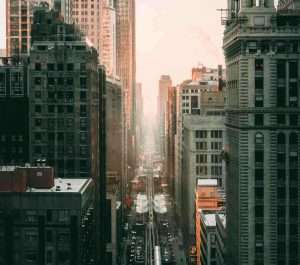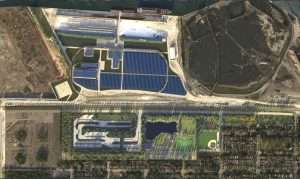Backed by the support of environmental groups and a portion of Windy City politics, protests flare up in the communities of the Southeast Side against the proposed ordinance that would amend zoning laws to allow mining in certain areas of the city.
 by Enrico Muzzetta
by Enrico Muzzetta
Last Wednesday, the two aldermen Peter Chico and Gilbert Villegas (representing the 10th and 36th wards, respectively), introduced an ordinance proposal to the City Council aimed at amending the zoning law. The intended effect would be to lift the ban on mining in specific areas of the city of Chicago. The reaction was almost immediate, and the communities of the Southeast Side, along with representatives of environmental groups, criticized the motives behind the maneuver, believing it to be specifically geared towards supporting the Invert project.


To better understand the situation, it is appropriate to take a step back. Ozinga, a well-known company in the construction and concrete production industry, has long been working on a plan to build an underground warehouse in the Southeast of Chicago, specifically near East 112th Street. The warehouse would be located on a former steel mill site and would span 1,828,000 square meters, extending over 100 meters deep along the Calumet River. The entire project is called Invert.
From its earliest stages, Invert has been followed by a shadow filled with doubts and controversies regarding both the appropriateness of carrying out works that, requiring at least a mining excavation process and the extensive use of explosives, would have a significant environmental impact, and the actual suitability of the project to be realized in compliance with the current city zoning regulations. Since 2021, in fact, the legislation on the matter – following a process initiated the previous year on the initiative of the former mayor Lori Lightfoot – includes a ban on mining in the area in question. In this regard, aligned with positions that highlighted – and still highlight – a structural incompatibility, was also the opinion sought by lawyers from two environmental justice organizations and issued by Patrick Murphey, the city’s zoning administrator. According to Murphey, in the absence of a proposal submitted through official channels, the information available at the time of the request suggested that the project was geared towards mining and, therefore, not admissible under current legislation.
Another particularly relevant aspect for building a comprehensive understanding of the situation is related to the historical background of the Southeast Side, which, after being the home of steel mills for decades, had managed to free itself from what residents label as environmental racism thanks to the new zoning plan. The concerns of the protesters were once shared by Olga Bautista, the executive director of the Southeast Environmental Task Force, who saw limestone extraction as Invert’s main goal. These concerns are reflected today in the position of Oscar Sanchez, also a member of the Southeast Environmental Task Force and a challenger to Chico in the district elections held last year. Sanchez has not hidden the frustration stemming from the identification of the Southeast as a sacrificial zone and bluntly put, has explained how a similar proposal to the one under discussion would be halted in its tracks if it concerned wealthier neighborhoods of the city like South Loop or Lincoln Park.
On the other hand, representatives of Ozinga have repeatedly denied having mining in mind as one of Invert’s objectives, portraying it instead as a project aimed at the revitalization of one of Chicago’s largest and most environmentally sustainable neighborhoods ever. Indeed, there is also another faction of municipal politics that has expressed concern about the conditions in which the neighborhood has been since the closure of the steel mills mentioned earlier. These mills generated millions of dollars and provided tens of thousands of jobs, benefiting especially the residents.
Therefore, eyes need to be kept close to what could be a story capable of marking a deep divide, one way or another, in the future of Chicago’s Southeast Side.
(Associated Medias | FAD) – All rights reserved.
